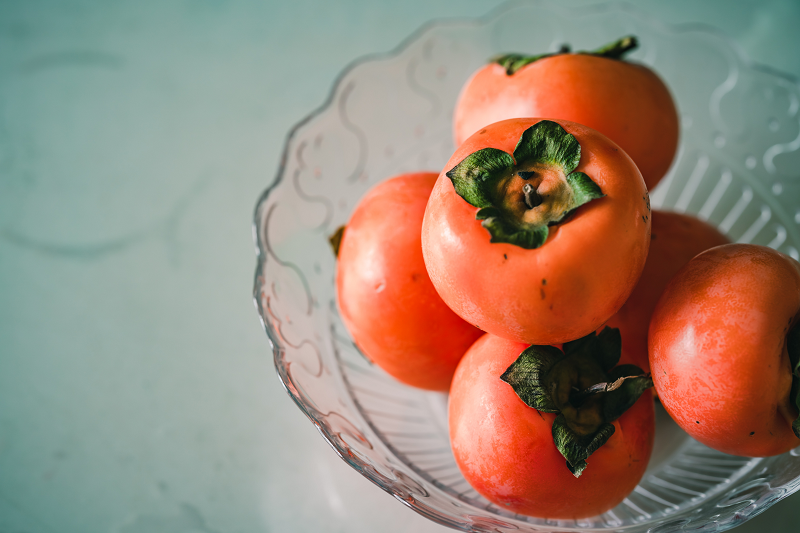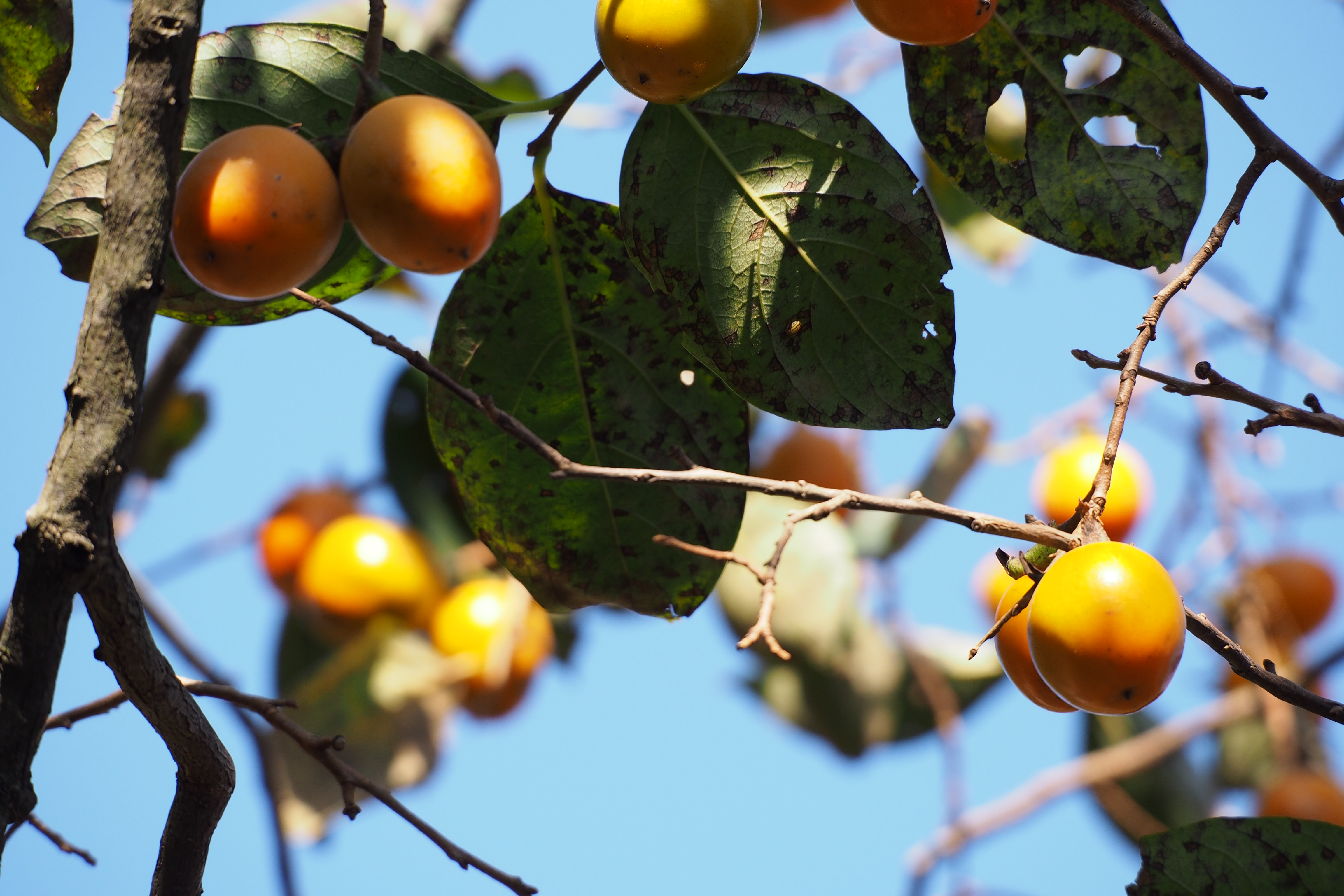A Bayesian model of fungal infection in persimmon

In great contrast to the native American persimmon, Diospyros virginiana L., which has never advanced beyond the status of a minor fruit, an oriental member of the family Ebenaceae, D. kaki L. f ., is prominent in horticulture. Perhaps best-known in America as the Japanese, or Oriental, persimmon, it is also called kaki (in Spanish, caqui), Chinese plum or, when dried, Chinese fig. 1.
The tree is native to Japan, China, Burma and the Himalayas and Khasi Hills of northern India. In China it is found wild at altitudes up to 6,000-8,000 ft (1,830-2,500 m) and it is cultivated from Manchuria southward to Kwangtung. Early in the 14th Century, Marco Polo recorded the Chinese trade in persimmons. Korea has long-established ceremonies that feature the persimmon. Culture in India began in the Nilgiris. The tree has been grown for a long time in North Vietnam, in the mountains of Indonesia above 3,500 ft (1,000 m) and in the Philippines. It was introduced into Queensland, Australia, about 1885.
It has been cultivated on the Mediterranean coast of France, Italy, and other European countries, and in southern Russia and Algeria for more than a century. The first trees were introduced into Palestine in 1912 and others were later brought in from Sicily and America.
The tree, reaching 4.5-18 m is long-lived and typically round-topped. The fruit, capped by the persistent calyx, may be round, conical, oblate, or nearly square, has thin, smooth, glossy, yellow, orange, red or brownish-red skin, yellow, orange, or dark-brown, juicy, gelatinous flesh. Generally, the flesh is bitter and astringent until fully ripe, when it becomes soft, sweet and pleasant.

Circular leaf spot (CLS) disease of persimmon, caused by the fungus Plurivorosphaerella nawae, induces necrotic lesions on leaves, chlorosis and defoliation. The presence of foliar lesions and premature leaf drop induce early fruit maturation and abscission, resulting in serious economic losses. The disease was first described in humid areas in Japan and Korea. The detection of CLS in Eastern Spain (2012) was the first report of the disease in a semi-arid area.
The fungus forms pseudothecia in leaf litter during winter and ascospores are produced as temperatures increase in spring. Ascospores are then wind-dispersed and infect persimmon leaves in the presence of a film of water and adequate temperatures.
Fungicide programs are effective for CLS control only when spray applications coincide with the infection period, defined by the presence of ascospores, adequate environmental conditions and susceptible leaves. The presence of airborne ascospores is typically monitored using spore traps, either active volumetric or passive. Nevertheless, the predictive ability of spore traps is somehow limited because they only detect the ascospores when already released in the orchard air.
Models for inoculum maturation in the leaf litter have been developed for several ascomycetes, as a more efficient alternative to ascospore counts. Most of these models rely on transformations of the response variable and then fitted as a linear regression. On the other hand, Bayesian hierarchical methods are becoming popular in many fields as they better address the intrinsic complexity typical in many natural systems. In Bayesian inference, parameters are treated as random variables and data are related to model parameters using a likelihood function, getting the posterior distribution by combining the prior distribution and the likelihood function. However, getting the posterior distribution is not always straightforward and numerical algorithms are usually required. Markov Chain Monte Carlo (MCMC) methods are widely used to obtain posterior distributions, but they involve computationally and time intensive simulations. The Integrated Nested Laplace Approximation (INLA) approach was developed as a computationally efficient alternative to MCMC.
Now, a team of researchers has used 2 hierarchical Bayesian beta regression models with fixed and random effects to estimate the production P. nawae ascospores in persimmon leaf litter with the INLA methodology. The resulting model calculates the dynamics of P. nawae inoculum in the leaf litter based on environmental covariates, without the direct quantification of ascospores in the leaf litter. This will facilitate a wider implementation of a decision support system to optimize the fungicide programs for CLS control in Spain and elsewhere.
Leaf litter samples were collected weekly in L’Alcúdia (Valencia, Spain) from 2010 to 2015. Leaves were soaked, placed in a wind tunnel, and released ascospores of P. nawae were counted. Hierarchical Bayesian beta regression methods were used to fit the dynamics of ascospore production in the leaf litter. The beta regression model was evaluated in four orchards for different years from 2010 to 2015.
Higher accuracy was obtained at the beginning and the end of the ascospore production period, which are the events of interest to schedule fungicide sprays for CLS control in Spain. This same modelling framework can be extended to other fungal plant pathogens whose inoculum dynamics are expressed as proportion data.
Author: César Tomé López is a science writer and the editor of Mapping Ignorance
Disclaimer: Parts of this article may be copied verbatim or almost verbatim from the referenced research paper.
References
- Morton JF (1987). “Japanese persimmon”. NewCROP, New Crops Resource Online Program, Purdue University Center for New Crops and Plant Products ↩
- Joaquín Martínez-Minaya, David Conesa, Antonio López-Quílez, José Luis Mira, Antonio Vicent (2019) Modelling Inoculum Availability of Plurivorosphaerella nawae in Persimmon Leaf Litter with Bayesian Beta Regression bioRxiv 771667; doi: 10.1101/771667 ↩